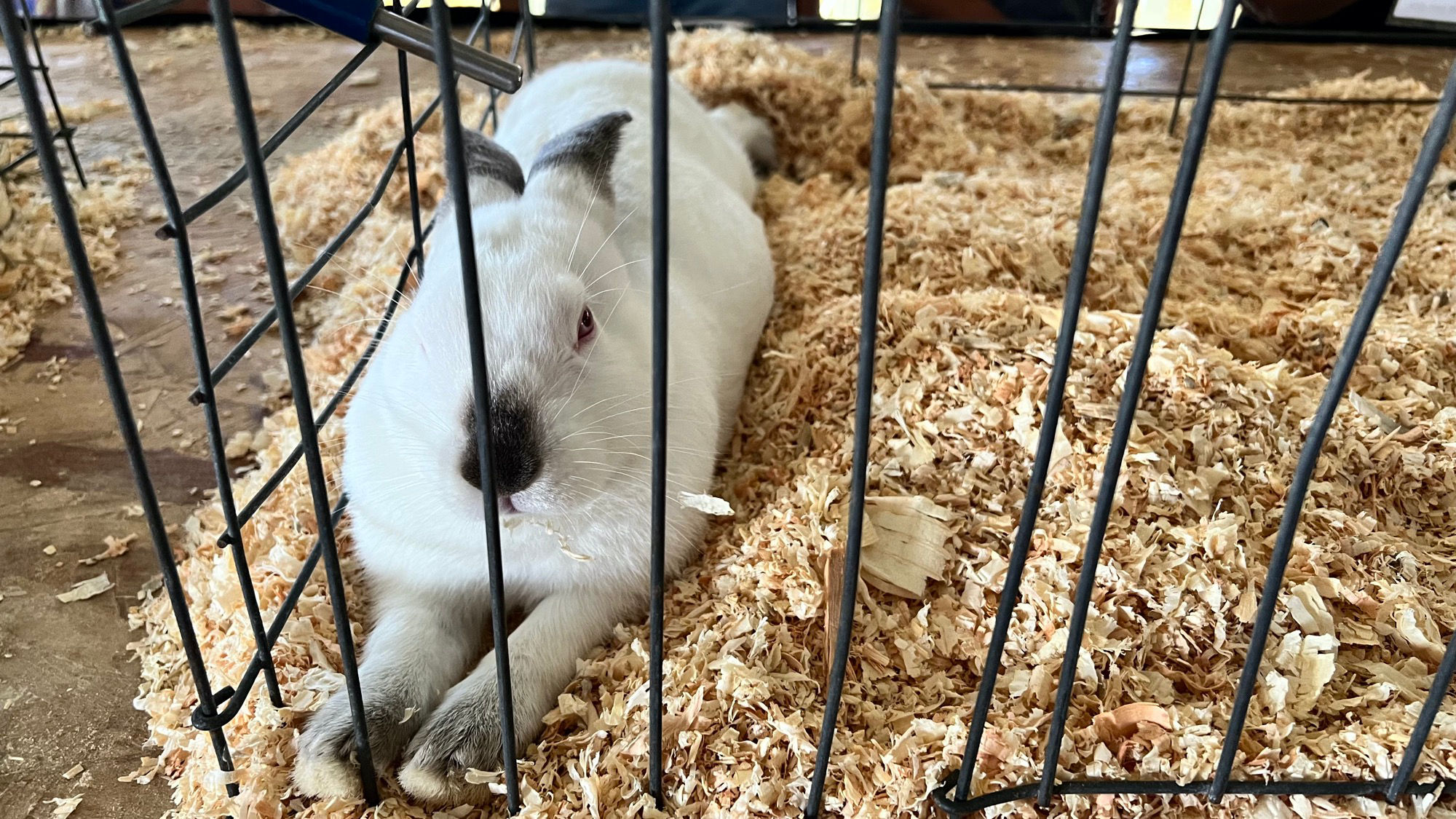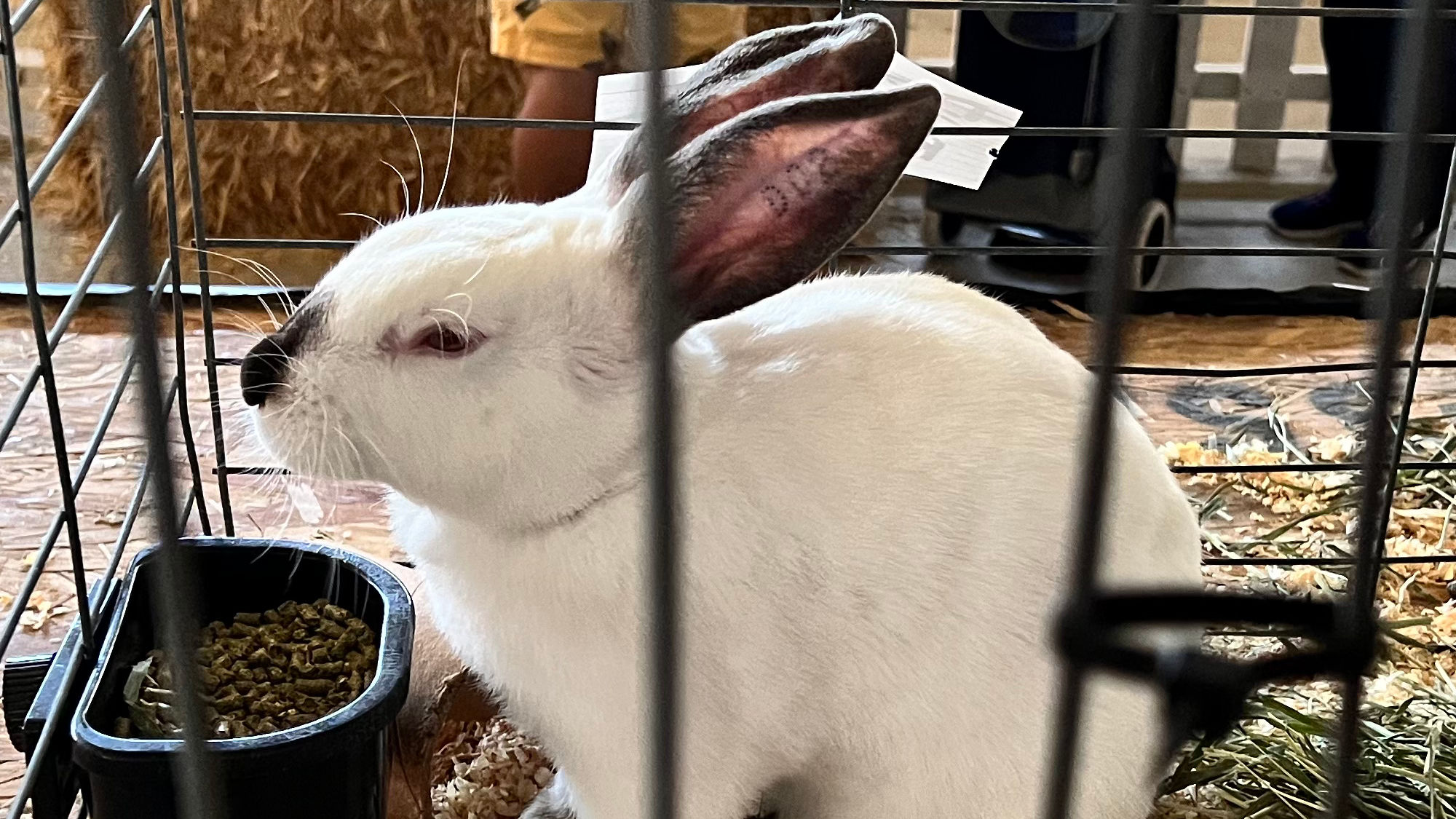


The Lion Head Rabbit
The most eye-catching feature of the Lionhead rabbit is the distinctive mane around its head giving it the look of a male lion as as the name implies.
While the Lionhead has only been a recognized breed in the United States since 2014, it os steadily gaining in popularity throughout the rabbit hobby.
In 2018 the Lionhead captured its first ARBA Convention Best in Show!
- Maximum weight 3.75 pounds
ARRA
American Rabbit Breeders Association
Magpie 3 Months
The Velveteen Lop Rabbit
Velveteen Lops are known for their soft velvet fur and sweet outgoing personality.
This breed is not yet recognized by ARBA (American Rabbit Breeders Association), but it is in the process.
- Maximum weight should not exceed 6.5 pounds
NVLC
National Velveteen Lop Club
Blue 3 Months
The Mini Rex Breed
The small size, plush coat and friendly personalities of Mini Rex Rabbits make them one of the most popular rabbit breeds in the United States.
They were first recognized by the American Rabbit Breeders Association (ARBA) in 1988, and have been very popular with exhibitors ever since.
ARRA
American Rabbit Breeders Association
Facebook
Tri Love Rabbitry
Minnie 3 Months
The Holland Lop Rabbit
The purebred Holland Lop is an extraordinary breed.
The most important characteristics that distinguish the Holland Lop from others are its compact, massive body, and a bold, beautiful head that is framed with short, thick ears that fall close to the cheeks from a well-defined and correctly positioned crown.
The Holland Lop, in general, is a well-balanced breed with great width and depth with strong legs and heavy bone.
With the added benefit of having an endearing temperament, the Holland Lop is one of the most popular breeds in the world today.
HLRSC
Holland Lop Rabbit Specialty Club
Grace 9 Weeks
The Dwarf Hotot Breed
The "Eye of the Fancy" was developed in Germany from two different strains that eventually merged to become the breed we know today. The Dwarf Hotot combines the striking markings of the Blanc de Hotot with the charm of a dwarfed breed making them easy to handle for children and a challenge to breed for the more seasoned.
Recognized by the ARBA in 1983, the Dwarf Hotot enjoys a steady popularity and a loyal following
- Maximum weight 3 pounds
ARRA
American Rabbit Breeders Association
Facebook
Blossom Hopes Rabbitry
Zoey 4 Months
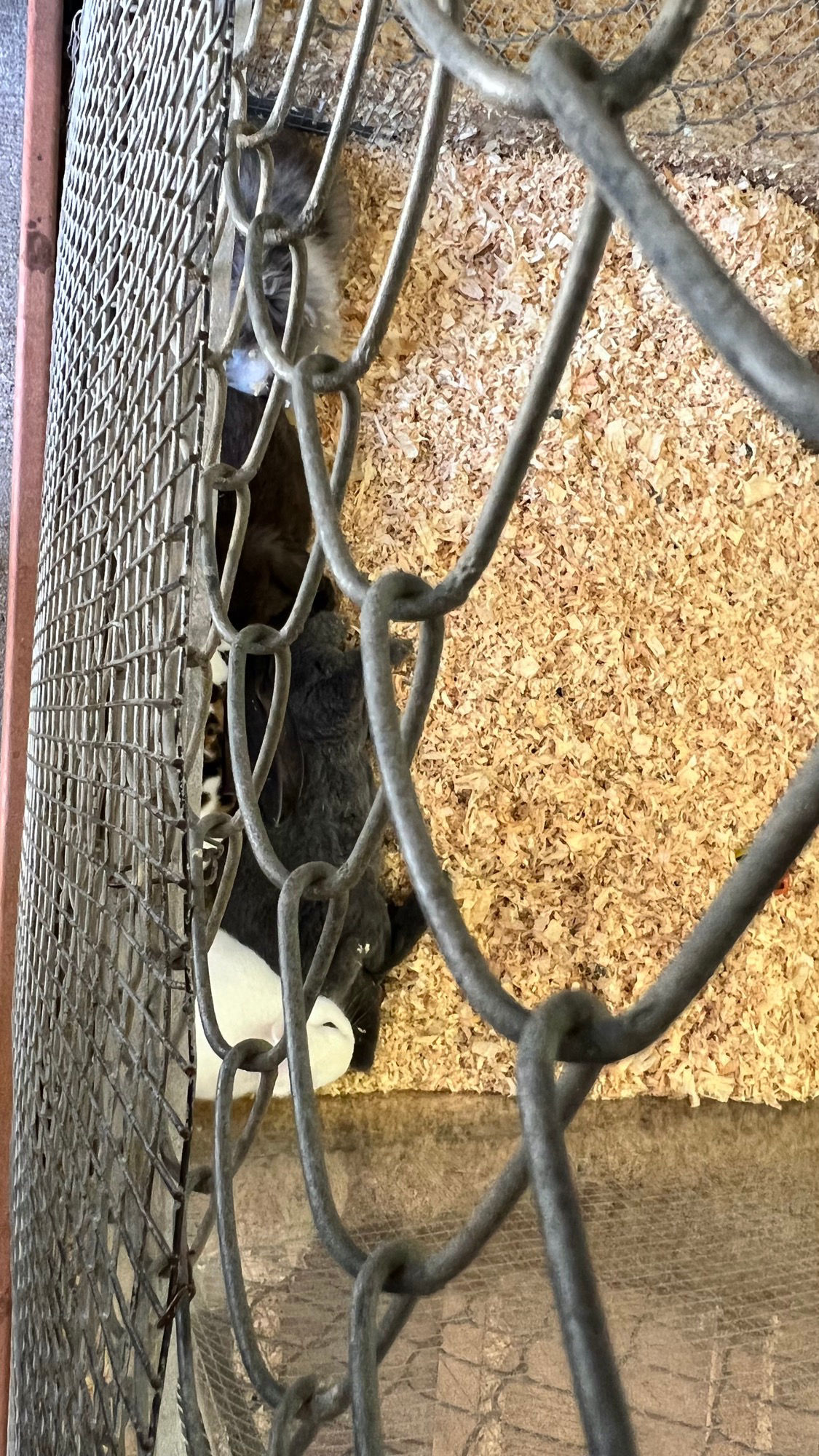

4-H Santa Rosa Valley
Julia Cook
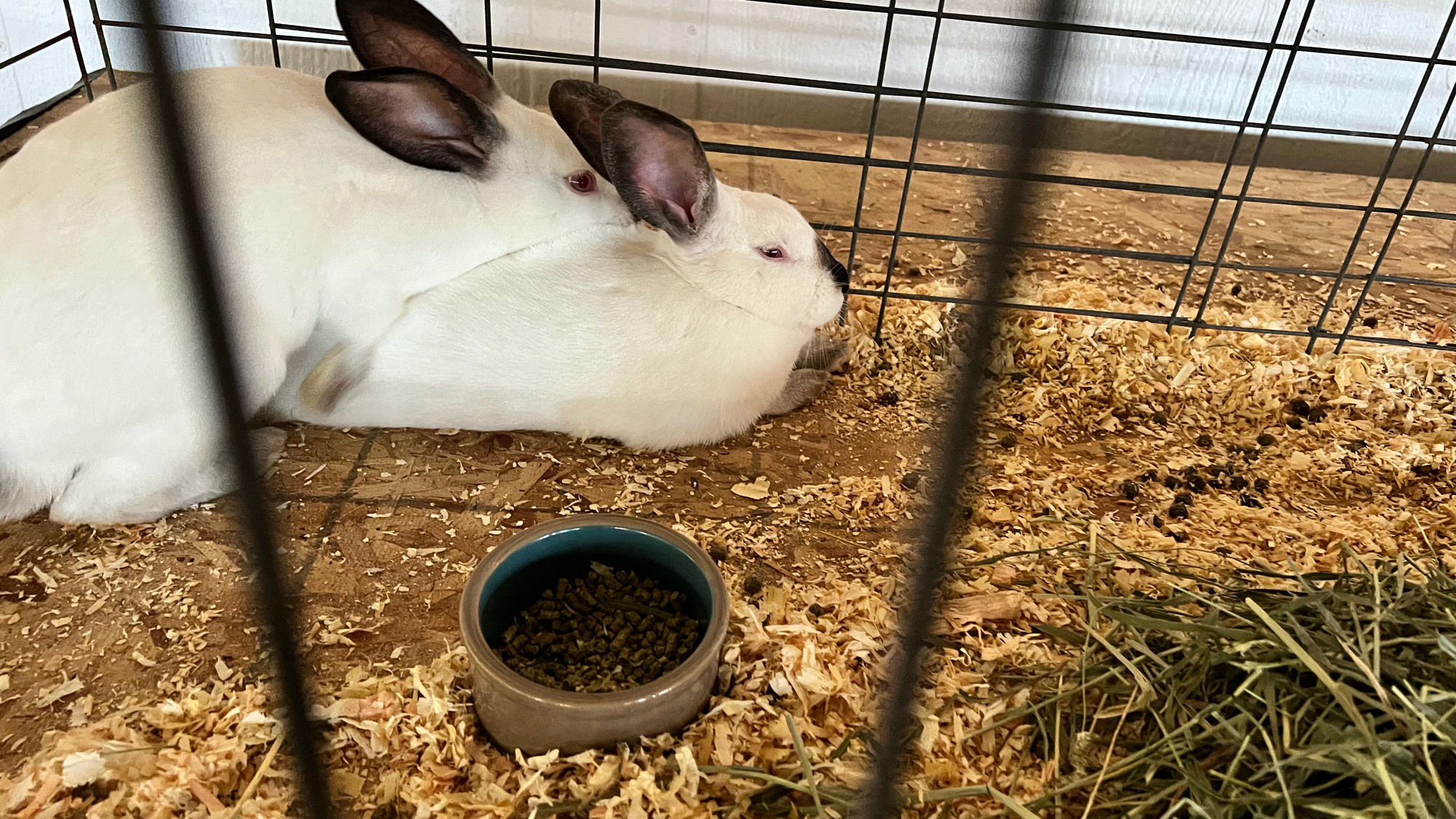






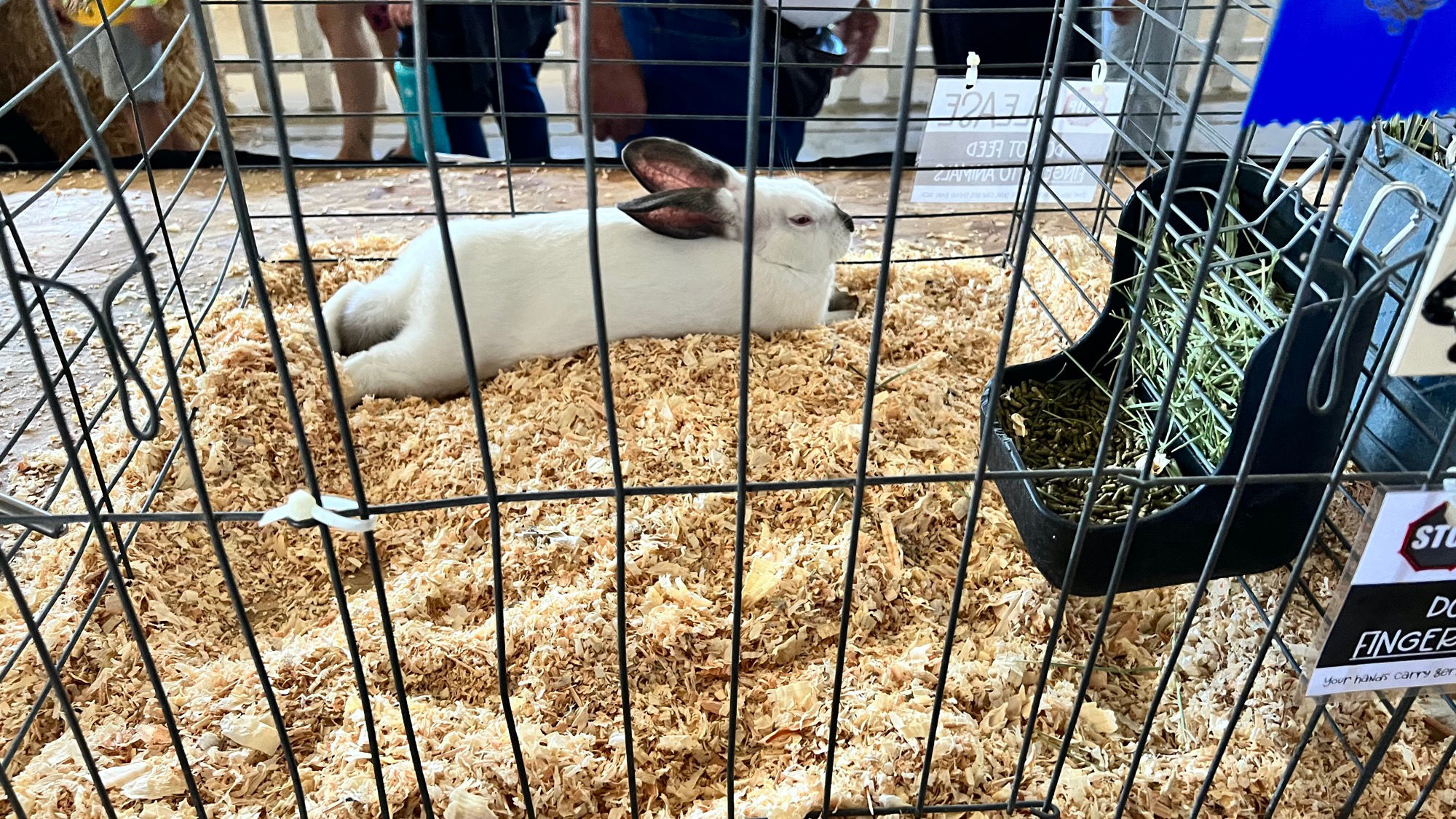


- Chest
- Dewlap
- Shoulder
- Cheek
- Neck
- Ears
- Saddle
- Ribs
- Forequarter
- Loin
- Hip
- Hindquarter
- Rump
- Tail
- Toes
- Legs
- Belly
- Flank
- Foot
- Leg
- Hock
Did You Know?
A Rabbit has 3 Eyelids
Did You Know?
A Rabbit has 18 Toenails
Did You Know?
A Rabbit has 28 Teeth
Did You Know?
A Rabbit has 24 Ribs
 Los Posas 4-H Riley Belote
Los Posas 4-H Riley Belote

- Rabbits have a 31 day gestation period.
- Baby Rabbits are called kits.
- A female rabbit is called a doe.
- It takes about 10 minutes for a doe to deliver her kits.
- Kits are born with their eyes closed and little to no hair.
- The mother covers the kits with her hair to keep them warm.
- At 3 days, the kits are already starting to get hair.
- One week old - Hair is filled in. Babies sleep a lot. Mother only feeds babies 1 -2 times per day.
- Two weeks old - Eyes start to open. Ears start to come up.
- Three weeks old - Between 2 -3 weeks kits start jumping out of nest. At 3 weeks most are out of the nest. Eyes are open
- Four weeks old - Kits eat solid food and drink water.
- Five weeks old - Growing & very playful. Weigh about 1 1/2 - 2 pounds.
- Six weeks old - Can take care of themselves. Time to wean from mom.
- Gaining approximately 1/2 - 1 pound per week
- Eight weeks old - Weigh between 2 1/2 - 3 1/2 pound.s
- Nine weeks old - Growing, Playing & Loving Life!
- Ten weeks old - Weigh between 3 1/2 - 5 1/2 pounds. Ready for Fair!

- Sniffles
Sniffles is a disease causing a very runny nose on a rabbit - Eye Conjunctivitis
Eye Conjunctivitis is an infection causing pus in the rabbit's eye - Ear Mites
Ear Mites are really tiny bugs in the rabbits ear and skin - Teeth Malocclusion
Teeth Malocclusion is when the rabbits teeth are not lined up right - Hairballs
Hairballs are pieces of hair balled together in a the rabbit's stomach
 Los Posas 4-H by Abigail Sandifer
Los Posas 4-H by Abigail Sandifer

RHD, also known as viral hemorrhagic disease, is a highly contagious and fatal disease of Lagomorphs that can be caused by two related Caliciviruses.
- Rabbit Hemorrhagic Disease Virus Serotype 1 (RHDV1 or RHDVa) only affects rabbits in the genus Oryctolagus, which includes most domestic rabbits and wild European rabbits.
- Rabbit Hemorrhagic Disease Virus Serotype 2 (RHDV2) affects Oryctolagus rabbits and several other species of rabbits, including wild jackrabbits and hares (Lepus), wild American cottontails (Sylvilagus); other rabbits and pikas (family Ochonotidae) may be susceptible.
RHD is endemic in most parts of Europe, Australia, New Zealand, Cuba, and parts of Asia and Africa. Considered a foreign animal disease, cases caused by RHDV1 occurred in the United States in 2000, 2001, 2005, and 2010, and Canada in 2011. A newer strain, RHV2 emerged in France in 2010 and has since spread across Europe and Australia. It arrived in southwestern Canada in 2018, leading to cases in domestic rabbits in Ohio, Washington, and New York City. In March 2020 a widespread outbreak of a genetically different strain of RHDV2 emerged in wild and domestic rabbits in the southwestern U.S. and northern Mexico. Since May 2020 it has been spreading in southern California and many other U.S. states, killing both wild and domestic rabbits.
The incubation period for RHD usually ranges from 1 to 5 days but can be up to 9 days.
It causes liver inflammation (hepatitis) and prevents the blood from clotting. Rabbits often die suddenly without showing any outward signs of illness, but may also have:
- Lethargy
- Inappetence
- Fever
- Jaundice
- Spasms or seizures
- Breathing difficulties
- Vocalizations
- Bleeding from nose, mouth or body orifices
Death is due to internal hemorrhaging and liver impairment. In the current outbreak, reported average mortality has been about 60% (range 20 to 100%). Rabbits of all ages are affected by RHDV2, while rabbits younger than 8 weeks are usually spared from RHDV1.
Can people or other animals get RHD?
No; RHD viruses are only known to affect lagomorphs of the family Leporidae (rabbits and hares).
Other types of Caliciviruses have been found in people, cattle, sea lions, and cats.
Controlling the Spread of RHD
Rabbits may inhale or ingest this virus.
It can persist in the environment for 4 months and is transmitted through direct contact with infected domestic or wild rabbits or indirect contact with objects (cages, feeders, grooming equipment, toys), or people and clothing contaminated by rabbit secretions or excretions.
Transmission occurs after consumption of contaminated food (such as hay) and water, or exposure to rabbit products (meat, fur, fiber, skins, offal, droppings, Urine).
Insects, rodents, birds, or domestic animals may become contaminated with virus and transfer it to rabbits.
Dogs, coyotes, birds of prey, and other predators can spread the virus by moving infected rabbit carcasses.

What is RHDV2?
- The newest pandemic Rabbit Hemorrhagic Disease (RHDV2) causes economic losses in the rabbit meat and fur industries and has significant negative and ecological impact on the wild rabbit population
- High concern of authorities
- RHDV2 is the Ebola virus for Rabbits, where it liquifies their internal organs
- Only Rabbits can get RHDV2 so humans, dogs, cats, are safe
- Mortality rate of 95%
History of RHDV2
- RHDV1 was first seen in China in 1984 though it started as RHDV1 and then the variant RHDV2 was found in France in March 2010 in wild and domestic rabbits and since then has spread all across the world.
- Since May 2020 RHDV2 has been spreading in southern California. Killing both wild and domestic rabbits. Most recent outbreak locally has been in California in San Luis Obispo, Riverside, and Apple Valley. But has been seen even in Ventura county.
Symptoms of RHDV2
- First signs are usually bloody nose and death
- Other signs are fever, appetite loss, and seizures
- Lethargy and difficulty breathing
- Some rabbits show no signs until sudden death
- RHDV2 causes liver inflammation (hepatitis) and prevents the blood from clotting. Death is due to internal hemorrhaging and liver impairment.
Transmission of RHDV2
- Most common rabbit-to rabbit transmission
- Virus can cling to human clothing and pet fur
- Roadkill can even transmit the virus on car tires
- Wildlife, birds, rodents, insects, and predators can transmit it
Durability of RHDV2
- One of the hardiest virus known to man
- Can survive several months
- Bleach won't kill the virus
Virus Prevention: Vaccination
- There is NO CURE for RHDV2
- Vaccines are the only for sure solution. USDA is allowing importation of two effective inactivated killed virus vaccines from Europe:
- Eravac from Spain
- Filavac from France
- You can sign up your rabbit for vaccine today
- There are vaccine clinics in California however due to vets having to import it is hard to get. It is done yearly and is about $35-45 for single dose and $55 for two dose vaccine
- Visit https://dvm.today to schedule or ask your local 4-H Rabbit leader
Prevention Pre-Vaccine: Biosecurity
- Practice biosecurity while waiting for vaccine
- Don't have playdates with other rabbits
- Limit the number of people visiting your rabbit/home
- Clean your shoes with Virkon S before entering/exiting the rabbitry
- Think logically and make responsible decisions
Vaccination clinics - Organize/Volunteer
- Organize all 4H, rabbitries, and owners
- Volunteer to help at a clinic
- Reach out and educate
 Mathew Ziegler Conejo - Simi
Mathew Ziegler Conejo - Simi

- Harry and Hazel Brother and sister bond - Alina Jarmala
- Midnight - Emily Hones
- Prince in Nature - Nyah Fisher
- Rebecca Kinion







